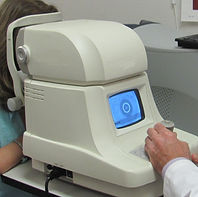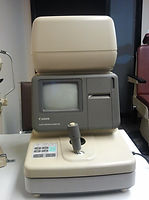
QUALITY EYE CARE
Mostafa Optometry Professional Corporation
Dr. Abdel-Karim Mostafa
Optometrist
GLASSES



We prescribe and dispense different styles of glasses:
-
Single vision glasses for distance, reading or computer use.
-
Bifocal glassess.
-
Progressive glasses.
-
Transitional glasses.
-
Prescription sun glasses (Tint coating).
-
Computer glasses.
Different coatings such as antireflection, hard coating (antiscratch coating), and tint are available as well.
We Prescribe and dispense many types of soft contact lenses:
-
Daily disposable contact lenses.
-
Biweekly contact lenses.
-
Monthly contact lenses.
-
Colored contact lenses.




CONTACT LENSES
How we determine the prescription
Our detrmination of prescription is based on objective measurements using our equipments and the subjective response of the patient to ensure proper visual correction and patient satisfaction.
First Step: Refraction Test (objective Refracation)
The refraction test is an eye exam that measures a person's prescription for eyeglasses or contact lenses. It is usually performed by two methods
A- Autorefraction:
We use a computerized machine called Autorefratcometer. It gives us the
starting point of getting the prescription.
B-Retinoscopy
It is a manual method in which we use an instrument called retinoscope. It is necessary in some cases, such as for children.
I




The autorefractor and retinoscope give us a good place to start,
but are not accurate enough to write the finished prescription.
To get the accurate prescription, we use the phoropter instrument.

Second Step: Refine the Prescription (subjective Refrcation)
Cycloplegic Refraction
For some young patients, we may need to check the status of refraction after complete relaxation of accommodation (eye muscles) in order to get accurate measurement of the prescription. In this method we instill cycloplegic eye drops 20-30 minutes before examination.